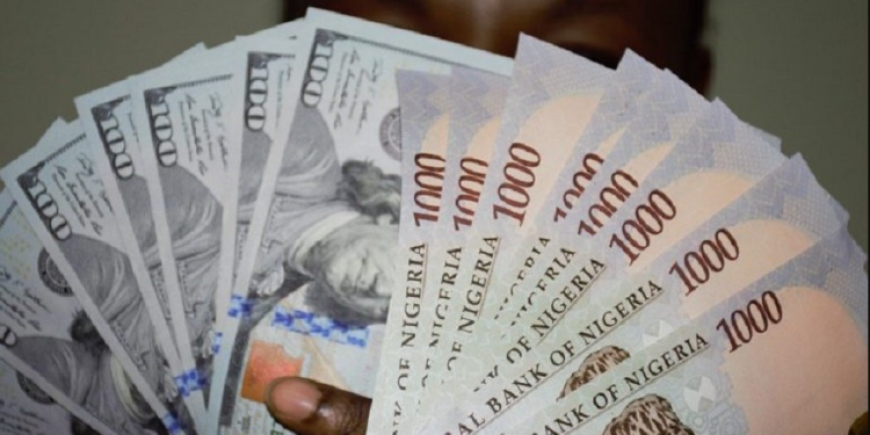Naira struggles at N1,600 baseline despite Dollar Index at lowest point since January

The naira struggled to maintain the N1,600 baseline in the official FX market over the past week, despite the dollar index reaching its lowest point since January.
FMDQ data shows that the naira’s value decreased by N15.41 to N1,579.89 per dollar on Friday, down from N1,564.40 on Thursday. This rapid decline in the naira’s value has also impacted Africa’s largest telecom carrier by revenue.
In the black market, the naira maintained the N1,600/$ baseline in various quarters of Nigeria’s business capital. MTN Group reported a decline in earnings at the midpoint of the fiscal year due to the ongoing depreciation of the naira and the ongoing conflict in Sudan.
Africa’s leading oil producer is addressing its infrastructure financing shortfall and improving the fortunes of the country’s fragile foreign exchange market by issuing dollar bonds domestically, as the market has not been conducive to Eurobond issuance.
The federal government approved a N28.8 trillion spending plan for 2024 with a N9.8 trillion deficit, which it intends to finance through both local and foreign borrowing channels.
U.S. Dollar Index Falls to January Low
On Monday morning, there was continued selling pressure on the U.S. dollar, with the USD Index dropping to 102 index points, its lowest since early January. Statements from Federal Reserve officials this week will be closely watched by investors, although there are no significant data releases on the U.S. economic calendar. The market’s risk-on sentiment and declining U.S. Treasury yields contributed to the decline of the safe-haven U.S. dollar on Friday.
Despite a stronger-than-expected improvement in U.S. consumer sentiment reported in the afternoon, the USD lost momentum and was unable to regain its strength.
The USD Index finished the week lower than it began for the sixth consecutive week, falling more than 0.5 per cent on Friday.
Increased appetite for risk and the decline in U.S. Treasury bond yields made it challenging for the USD to hold its ground heading into the weekend.
More insights
The U.S. 10-year yield remains below 3 per cent on Monday morning in Europe, and U.S. stock index futures are nearly flat for the day.
Federal Reserve members Mary Daly and Austan Goolsbee hinted at potential monetary easing in September over the weekend, and this week’s final policy meeting minutes are expected to support a dovish perspective. Investors anticipate that Fed Chair Jerome Powell will discuss the need for a rate cut when he speaks on Friday in Jackson Hole.
According to Barclays economist Christian Keller, the U.S. inflation scare that had dominated policy debates since prices began to rise during the pandemic has largely subsided, though it may still be too early to declare victory. Central bankers will likely avoid such declarations in their official rhetoric.
Futures suggest a 25% probability of a 50 basis point cut, subject to notable fluctuations based on forthcoming payroll data.
A quarter-point shift is fully priced in. The annual benchmark revisions to job data, due this Wednesday, might show a downward revision of 600,000 to one million positions, potentially exaggerating the labour market’s fragility. As of now, it is expected that the U.S. will experience a softer landing.
Federal Reserve policymaker Christopher Waller is set to speak later today. As one of the Fed’s more aggressive rate-setters, Waller’s rejection of rate-cut wagers could potentially boost the USD.



 moderator
moderator 





